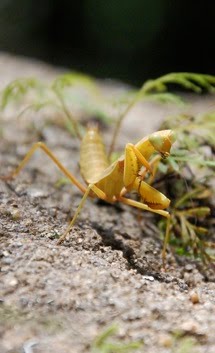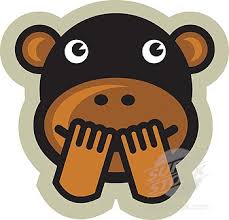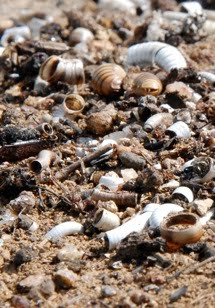Surrounded by Science
Not only am I lucky enough to be living in Paris right beside the oldest zoo in the world, I am also right beside several fantastic science museums. I will start this post with a little trip to the Grande Galerie de l'Evolution (Grand Gallery of Evolution). It's like France's version of the Smithsonian of Natural History. Lots of animal bones and models and excited school children not listening to their teachers. Their special exhibit right now focuses on whales, but you probably guessed that from the photo of the cool statue.
 They don't call it the Grande Gallerie for nothing. It is a large and wonderful building.
They don't call it the Grande Gallerie for nothing. It is a large and wonderful building. Ravioli and friends (for those of you from Community Park, Ravioli is a giraffe and Littlebrook's mascot).
Ravioli and friends (for those of you from Community Park, Ravioli is a giraffe and Littlebrook's mascot). So you're in the ocean, you're hungry, but you forgot your fishing rod. What do you do? Well, if you're an anglerfish like this fellow, you're in luck, because you have a fishing rod attached to your head. I wonder if it ever accidentally tickles him when he is sleeping?
So you're in the ocean, you're hungry, but you forgot your fishing rod. What do you do? Well, if you're an anglerfish like this fellow, you're in luck, because you have a fishing rod attached to your head. I wonder if it ever accidentally tickles him when he is sleeping? The rare uni-whale? Not quite. But it is a whale. If you look closely at this narwhal, you can see that the "horn" is not exactly centered. However, that is not a horn. It's actually a tooth. A left tooth to be exact.
The rare uni-whale? Not quite. But it is a whale. If you look closely at this narwhal, you can see that the "horn" is not exactly centered. However, that is not a horn. It's actually a tooth. A left tooth to be exact. Not only do some whales have big teeth, they have big mouths. In fact, a humpback like this one can open it's mouth and swallow a gulp of water the size of a big school bus. That would give Miss Frizzle and the gang quite a fright wouldn't it? So what does this enormous mouth eat? Tiny shrimp.
Not only do some whales have big teeth, they have big mouths. In fact, a humpback like this one can open it's mouth and swallow a gulp of water the size of a big school bus. That would give Miss Frizzle and the gang quite a fright wouldn't it? So what does this enormous mouth eat? Tiny shrimp. This little fellow has the opposite problem. He's got a big head and a tiny mouth, but it's just the right size for picking crabs off the ocean floor. He also has sharp teeth to crunch the hard shells and get to the delicious gooey middles.
This little fellow has the opposite problem. He's got a big head and a tiny mouth, but it's just the right size for picking crabs off the ocean floor. He also has sharp teeth to crunch the hard shells and get to the delicious gooey middles. This is called the Grand Gallery of Evolution, so here's a little evolution. Where did whales come from? Well, the first thing we would really call a whale didn't show up in the oceans until about 40 million years ago. Before that fossils show us that whales were having, well, a whale of a time adapting to their new watery world. Yep, new watery world. Their old world was dirt. Whales breath air. Still do. Always did. They came from animals that used to live on the land. About 70 million years ago, the bones from this creature above walked on land and swam around in the water to hunt for food, like a crocodile.
This is called the Grand Gallery of Evolution, so here's a little evolution. Where did whales come from? Well, the first thing we would really call a whale didn't show up in the oceans until about 40 million years ago. Before that fossils show us that whales were having, well, a whale of a time adapting to their new watery world. Yep, new watery world. Their old world was dirt. Whales breath air. Still do. Always did. They came from animals that used to live on the land. About 70 million years ago, the bones from this creature above walked on land and swam around in the water to hunt for food, like a crocodile. Jump ahead a few million years, and now this girl shows up. She spends most her time in the water. Her feet are more webbed like fins than feet.
Jump ahead a few million years, and now this girl shows up. She spends most her time in the water. Her feet are more webbed like fins than feet.  And now we're only 40 million years ago again. This early whale had the big flat whale tail we all know. And it's no fluke. Ok it is a "fluke", so I'll have to say it is no accident. It uses the big paddle-like tail to speed it along through the ocean. Its two front legs are now full flippers to help it steer. So what happened to the back legs? Look below.
And now we're only 40 million years ago again. This early whale had the big flat whale tail we all know. And it's no fluke. Ok it is a "fluke", so I'll have to say it is no accident. It uses the big paddle-like tail to speed it along through the ocean. Its two front legs are now full flippers to help it steer. So what happened to the back legs? Look below. They are still there, but they are really tiny and useless. Some snakes have two very tiny bones that used to be their back legs too.
They are still there, but they are really tiny and useless. Some snakes have two very tiny bones that used to be their back legs too.How many fingers does a whale have? Five of course. The two of you have so much in common.
 No, that's not whale hair. Although whales do have short hairs all over their bodies. The long stringy parts are baleen. They act like giant colanders to sort out the things that are too big to eat and trap the small delicious things. Remember from the big-mouthed humpback before. Big mouthed whales eat tiny shrimp and such. Baleen is made from the same thing your fingernails are. They can grow back just like your fingernails. Now if we could find an enormous pair of toenail clippers and a very cooperative humpback, we could do a great experiment.
No, that's not whale hair. Although whales do have short hairs all over their bodies. The long stringy parts are baleen. They act like giant colanders to sort out the things that are too big to eat and trap the small delicious things. Remember from the big-mouthed humpback before. Big mouthed whales eat tiny shrimp and such. Baleen is made from the same thing your fingernails are. They can grow back just like your fingernails. Now if we could find an enormous pair of toenail clippers and a very cooperative humpback, we could do a great experiment.
 No, that's not whale hair. Although whales do have short hairs all over their bodies. The long stringy parts are baleen. They act like giant colanders to sort out the things that are too big to eat and trap the small delicious things. Remember from the big-mouthed humpback before. Big mouthed whales eat tiny shrimp and such. Baleen is made from the same thing your fingernails are. They can grow back just like your fingernails. Now if we could find an enormous pair of toenail clippers and a very cooperative humpback, we could do a great experiment.
No, that's not whale hair. Although whales do have short hairs all over their bodies. The long stringy parts are baleen. They act like giant colanders to sort out the things that are too big to eat and trap the small delicious things. Remember from the big-mouthed humpback before. Big mouthed whales eat tiny shrimp and such. Baleen is made from the same thing your fingernails are. They can grow back just like your fingernails. Now if we could find an enormous pair of toenail clippers and a very cooperative humpback, we could do a great experiment. This what happens to bad panda bears in Paris. They lock them up in small glass boxes. Oh just kidding, that's a horrible idea. This is just a weird stuffed panda bear that does look like it is stuck in a glass box. Come to think of it. It's pretty horrible either way.
This what happens to bad panda bears in Paris. They lock them up in small glass boxes. Oh just kidding, that's a horrible idea. This is just a weird stuffed panda bear that does look like it is stuck in a glass box. Come to think of it. It's pretty horrible either way.  The end. Thanks for tagging along on this little field trip. Look below to see what's coming up in a future science field trip.
The end. Thanks for tagging along on this little field trip. Look below to see what's coming up in a future science field trip.Yeah, it's what you think it is. A two-headed cow. Come back to the blog in a few days to the rest of this weird museum.









8 comments:
Great pictures and comments, Mr. Lebo! For the past week we've been unable to log on to any of the computers at Littlebrook to make comments. But, we've been reading and looking at the photographs and hope we'll be able to log on again soon. All the best from the USA. Josephine and Heloise fly to Paris next Wednesday!
Cheers,
Mr. Holsten
We enjoyed the field trip to the museum today, especially the information about whales. The picture of the baleen was great.
Ms.P's class
Dear Camilla, 1st,
Good question. Unfortunately, I don't know. The museum only had the heads. That means the body probably wasn't special, so I guess 4 legs. But in the next post you will be able to see an 8-legged lamb and baby pig with only 1 eye. It is a bit creepy, but it is still science.
Uncle Chad,
I liked the kangaroos (I don't think she saw any here , Dena) and the big whale flipper. Miss you,
Love Maisy
This blog post deserves an evolution award! Great photos, explanations, and writing. I need to show it to AA too (Cindy knows who), who is dying to work with whales when she is a bit older.
Maybe I should look into being a science teacher?
Two headed cows are gross.Alex Freda
What's up Mr.L? Matt Ams
What's an elephant bird? Evan O'Donnell
Do you like rambutan? I liked it.It tastes really similar to lychee but hairier.Kristi Chen
Hi Mr. Lebo! Weren't there also elephant birds in New Zealand too? I also didn't know there were freaks(like the two-headed cow) in Madagascar. Antoine Rapin
Dear Alex,
Remember not to judge. Those two-headed cows might think your one head is just too weird for words.
Dear Evan,
Elephant birds are awesome. They are the heaviest bird to ever live. To find out more, go to the post entitled "Take a Ride on the Dodo Go Round" and the most recent post about bones. There's a skeleton of an elephant bird.
Dear Kristi,
I loved the rambutans. I liked them better than lychees. They are a cool-looking fruit. They were also so cheap. In America they would cost about $30. We paid $1 for a whole basket. You can also decorate them and turn them into sculptures (there will be pictures of this in the next post).
Dear Antoine,
New Zealand didn't have any Elephant birds, but they did have Moa. They weren't quite as heavy, but they were even taller than Elephant birds. If I stood beside one, my head would just barely reach the top of a Moa's back. And that doesn't count the neck and head! Humans hunted them into extinction soon after they landed on New Zealand about 700 years ago.
The two-headed cow was from France, but they have them here in Madagascar too. And you have them in America. They are all over the world. Just there are deaf people all over the world. They are regular cows. They just happen to have been born with two heads instead of one.
Thank you all very much for the comments.
Post a Comment